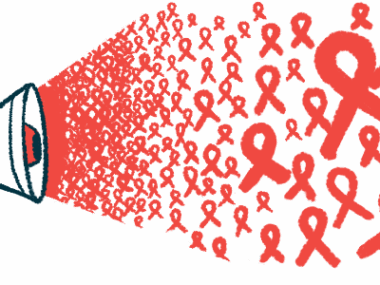Sjögren’s Foundation Awards Scientists for ‘Outstanding’ Work
Written by |

The Sjögren’s Foundation has given it 2021 Outstanding Abstract Award to two scientists who presented new research about Sjögren’s syndrome at this year’s annual meeting of the American College of Rheumatology.
The award “recognizes exceptional research and encourages investigators to continue to focus on Sjögren’s throughout their career,” according to the foundation.
One recipient is Sara McCoy, MD, a clinical rheumatologist with the University of Wisconsin, who shared two separate presentations at the meeting.
In the presentation “Targeting Endogenous Mesenchymal Stromal Cell Response to Interferong in Sjӧgren’s Syndrome,” McCoy shared data from experiments on mesenchymal stromal cells (MSCs) taken from people with dry mouth either caused by Sjögren’s or unrelated to the autoimmune disease as a control group.
MSCs are a type of stem cell known to have immune-modulating properties, but whose exact function in disease remains incompletely understood.
McCoy and colleagues demonstrated that Sjögren’s MSCs behave differently than control MSCs in response to a pro-inflammatory signaling molecule called interferon gamma, which is known to be elevated in Sjögren’s. Specifically, Sjögren’s MSCs secrete altered levels of certain immune-coordinating signaling molecules, and this promotes the movement of other inflammatory cells like T-cells.
These results imply that MSCs are “a plausible pathogenic [disease-driving] cell type” in Sjögren’s, the researchers concluded.
The team also showed that treatment with ruxolitinib could block these effects and provides “a possible therapeutic avenue.” Ruxolitinib is used as chemotherapy for some blood cancers, and a cream containing ruxolitinib recently was approved to treat atopic dermatitis (eczema).
In her other presentation, “Sjӧgren’s Symptom Burden Drives Immunomodulatory Therapies but Correlates Poorly with Disease Severity Markers,” McCoy shared clinical data covering 1,454 participants in the Sjögren’s International Collaborative Clinical Alliance (SICCA) registry.
Through statistical analyses, the researchers divided the patients into four “clusters” based on symptoms, and looked for patterns in clinical factors and treatments.
Results showed that “symptom burden does not correlate well with traditional disease markers of severity,” the researchers wrote.
They added that the findings “highlight discordance between disease activity and treatments.” In other words, patients are often given treatments based on the symptoms they are experiencing, rather than assessments of the underlying biology of their disease.
“We propose future research defining these subsets to optimize treatment approaches in order to harmonize patient-provider expectations,” the team concluded.
The other Outstanding Abstract Award went to Ilir Cinoku, MD, with National and Kapodistrian University of Athens in Greece. Cinoku’s presentation was titled “Interferon (IFN)-Stimulated Gene 15: A Novel Biomarker for Lymphoma Development in Sjögren’s Syndrome.”
Cinoku and colleagues shared analyses of genetic data from 98 salivary gland biopsies of Sjögren’s patients, of whom 37 had lymphoma. People with Sjögren’s are known to be at relatively high risk of lymphoma, a form of blood cancer.
Results indicated that patients with lymphoma had abnormally elevated expression of a gene called ISG-15, which suggests that this gene “could represent a novel biomarker for lymphoma development among” Sjögren’s patients, the researchers concluded.
Francesco Ferro, MD, with the University of Pisa in Italy, received an honorable mention for the presentation “Prognostic Value of Salivary Gland Ultrasonography in Primary Sjögren’s Syndrome.” Data from 137 patients followed at a single Italian center suggested that an ultrasound of the salivary glands may be useful for identifying Sjögren’s patients at greater risk of lymphoma.






